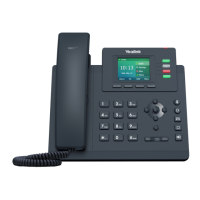Getting Started
20
Getting Started
This chapter describes where Yealink devices fit in your network and provides basic initialization instructions of
devices.
Topics
Requirements
Yealink IP Phones in a Network
Initialization Process Overview
Verifying Startup
Requirements
In order to perform as SIP endpoints in your network successfully, you need the following in deployments:
l A working IP network is established.
l VoIP gateways configured for SIP.
l The latest (or compatible) firmware of the device is available.
l A call server is active and configured to receive and send SIP messages.
l A text editor, such as Notepad++, to create and edit boot files, configuration files, and resource files.
Yealink IP Phones in a Network
Most Yealink phones are connected physically through a Category 5E (CAT5E) cable to a 10/100/1000Mbps Eth-
ernet LAN, and send and receive all data using the same packet-based technology. Some phones support the wire-
less network.
Since the IP phone is a data terminal, digitized audio being just another type of data from its perspective, the phone
is capable of vastly more than traditional business phones. Moreover, Yealink phones run the same protocols as
your office personal computer, which means that you can develop many innovative applications without resorting to
specialized technology.
There are many ways to set up a phone network using Yealink phones. The following shows an example of a net-
work setup:

